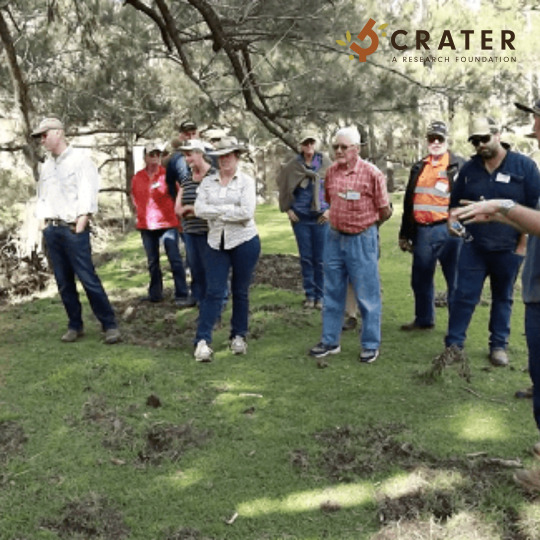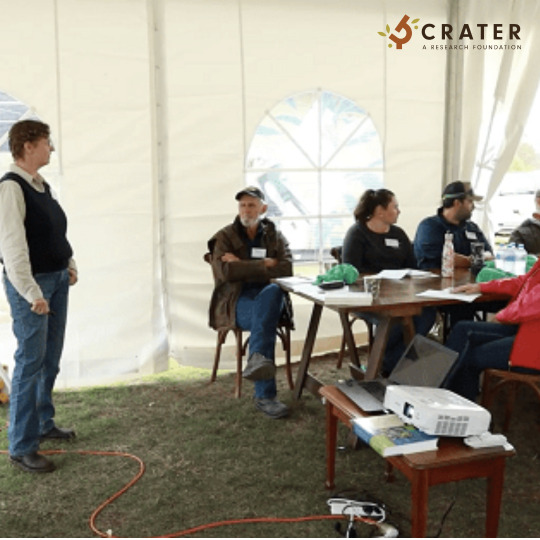Link
The benefits of learning regenerative agriculture courses go beyond soil health. These farmers are committed to minimizing soil disturbance and avoiding tilling or foregoing it altogether. Instead, they minimize their use of fertilizers, pesticides, and other chemicals by using a variety of organic materials and covering the soil with cover crops.
#regenerativeagriculturecourses#regenerativeagricultureaustralia#regenerativeagriculture#agriculturestudy
0 notes
Link
Regenerative farming practices is a growing field that emphasizes the re-use of soil nutrients to improve crop yields. Farmers using regenerative farming techniques typically disturb the soil with minimum tillage and avoid high doses of pesticides. In addition, they grow a diversity of crops and encourage the use of grazing animals to improve the soil.
#regenerativefarming#sustainablefarmingpractices#regenerativefarmingpractices#farmingpractices#organicfarmingpractices
0 notes
Link
Organic farming practices principles are multifunctional. Organic farming is not always certified, but it can produce surplus foods that are still inaccessible to the market. Therefore, there are barriers and buffers required for organically managed systems to prevent contamination. These barriers and buffers must be constructed to isolate and prevent the drift of substances not allowed by organic regulations.
#organicfarmingpractices#farmingpractices#sustainablefarmingpractices#regenerativefarmingpractices#regenerativefarming
0 notes
Link
Nature is a beautiful thing and Australia offers birdwatchers a variety of unique habitats to explore and secrets to uncover. From the coastal scrubs of Cairns to the tall eucalyptus forests of Monto, birdwatchers can find unique birdwatching sites across the country.
0 notes
Link
Regenerative farming practices improve the soil quality, increase crop yields, improve water retention, and even improve the taste. Regenerative farming practices can bring about significant environmental, economic, and social benefits, and they are becoming more common in the farming industry every day.
#regenerativefarming#cultivatefarming#regenerativefarmingpractices#farmingpractices#organicfarmingpractices#sustainablefarmingpractices
0 notes
Photo

CRATER hosts free agricultural workshops to assist farmers with regenerative farming and sustainable farming practices. Also, assist in building farm productivity and monetizing their property’s natural capital.
#agriculturestudies#regenerativefarming#regenerativefarmingpractices#sustainablefarmingpractices#organicfarmingpractices
0 notes
Link
The importance of using regenerative farming techniques is to make agricultural lands more productive. Such practices help to reduce nitrogen runoff, improve water quality, and create a habitat for biodiversity. Regenerative farming methods are not only better for the environment, but also improve the productivity of farmers' crops and boost their incomes.
#agriculturestudy#regenerativeagriculturestudy#regenerativeagriculturetraining#regenerativeagriculturecourses#agriculturestudyinaustralia
0 notes
Link
There are several regenerative agriculture training and courses available. Some of the best are hosted online or have live sessions that give you hands-on experience. You will learn the basics of regenerative agriculture, and will also gain experience in business planning, communication, conflict resolution, and more. Some of the courses are self-paced, while others require practical experience in the field. CRATER is one of the best research organizations in Australia. It will give you hands-on experience and build your capacity to work with complexity.
#agriculturestudy#agriculturestudies#regenerativeagriculturetraining#regenerativeagriculturecourses#researchorganisationsinaustralia#researchfoundations
0 notes
Photo

If you are interested in becoming an expert in the science and practice of regenerative agriculture, you can visit CRATER's site and enroll yourself. Regenerative agriculture study is an emerging discipline that combines academic theory with real-world experience, and CRATER focuses on both factors. The courses taught by renowned experts offer a practical approach to understanding the principles of regenerative agriculture.
#agriculturestudy#agriculturestudies#agriculturestudyinaustralia#regenerativeagriculturetraining#regenerativeagriculturecourses
0 notes
Link
Regenerative agriculture is a method of organic farming that promotes the health of a system. It includes crop rotation and cover crops. CRATER is a research foundation that provides you the training in regenerative agriculture studies. You can study regenerative techniques by enrolling in regenerative agriculture courses and becoming familiar with the principles of organic farming.
#agriculturestudy#agriculturestudies#regenerativeagriculturestudy#regenerativeagriculturetraining#regenerativeagriculturecourses#regenerativeagricultureaustralia
1 note
·
View note